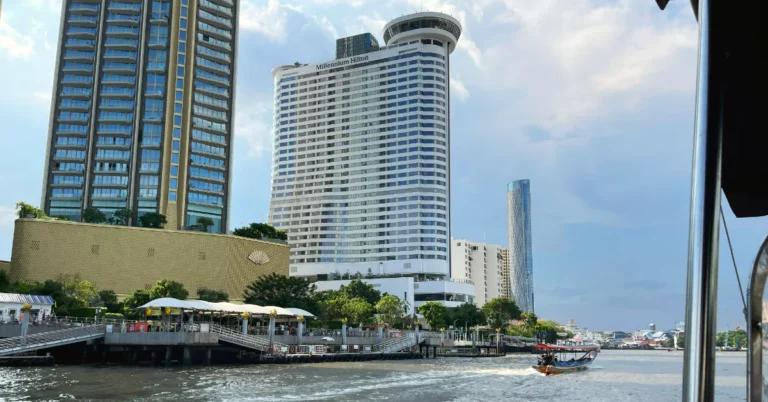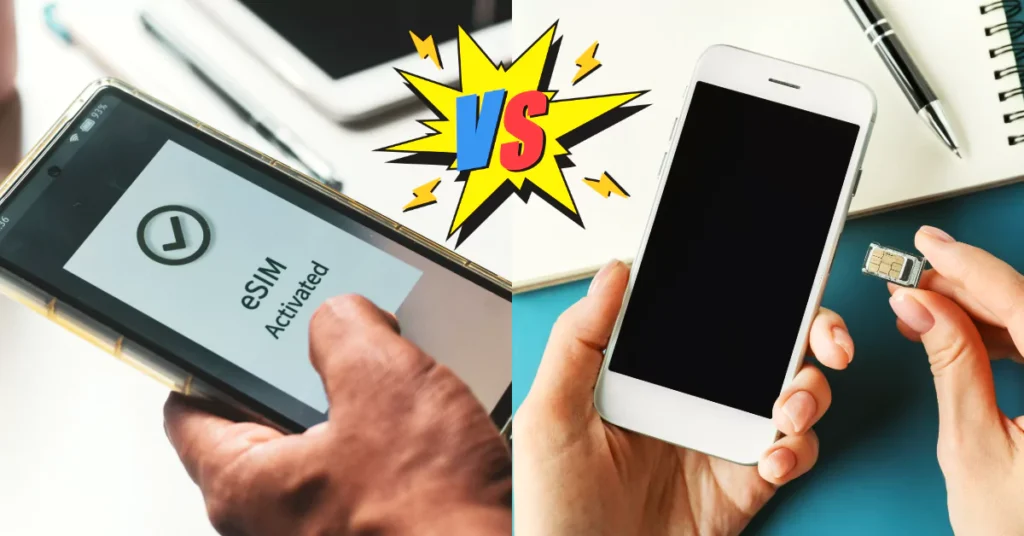
We always want to stay connected when traveling abroad and of course you can just go old-school and try to connect to local wi-fi networks, but that’s generally not the safest option. Then there are the so-called ‘travel packages’ from your home provider that tend to get very expensive fast for very little data.
Your best bet is to get a mobile data connection through a (local) sim card and there are generally two cost-efficient options:
1. Get a local (physical) sim card once you’ve landed at your destination.
2. Get an E-SIM before departure and be connected to the internet as soon as you land.
Both options have pros and cons and in this article we’ll compare local sim cards with eSIM cards and this way you can find out how to best stay connected when traveling.
This post contains affiliate links. If you make a purchase through them we may earn a small commission at no extra cost to you.
What’s the difference between an eSIM and a local SIM?
Local SIM
This is a plastic chip card from a local phone provider that you insert into your smartphone. You typically buy it at an airport, convenience store or mobile shop. It’s just like the one you from your own carrier, but then an overseas one.
eSIM: An eSIM is a digital SIM card that can be loaded onto your phone instead of a physical SIM card. You can purchase one plus a valid data plan online and activate it directly on your phone
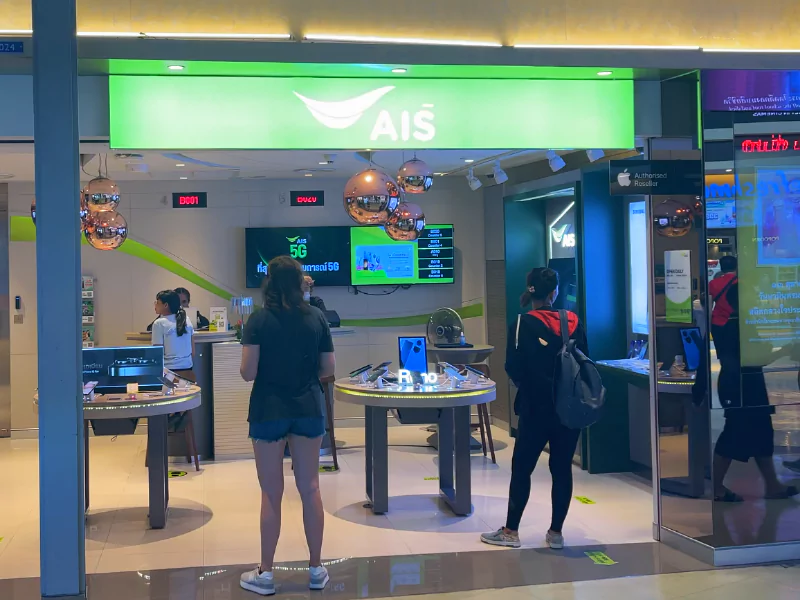
Comparison: eSIM vs Local SIM
eSIM | Local SIM | |
Cost | Slightly higher (but saves time) | Often cheaper locally |
Setup | Instant, no physical handling | Requires store visit |
Phone Compatibility | Newer phones only | Works with most unlocked phones |
Data Coverage | Global/regional options | Country-specific |
Local Phone Number | Rare, often extra | Usually included |
Pros and Cons: eSIM vs Local SIM
Advantages eSIM
- Easy to Use: You can easily activate your eSIM yourself, and there’s no need to visit any store. Plus its all-digital so no more risk of loss or damage of the SIM.
- Pre load: You can pre activate before you leave, so your eSIM will be instantly connected when you land.
- Multiple eSIM: Your phone can load multiple sim cards onto your phone. This means you can have both your own SIM card active and also the local SIM. (Max. 2 active SIM cards at the same time)
- Multi-country option: You can opt to choose for a global sim instead of a local one and you are now connected in all countries you visit.
Disadvantages eSIM
- More expensive: All this convenience comes at a price, that is usually higher than a local SIM card. For example in countries like Thailand, Vietnam and Indonesia a local sim is much cheaper.
- No Phone Number: Taking a pre-loaded eSIM usually does not come with a local phone number.
- Need newer phone: You need to make sure that your phone supports (dual) eSIM. Most recent phones do, but be sure if your phone does too.
- Installation: For most phone users the process is pretty straight forward and easy, but it can be difficult for some users.
Advantages Local SIM
- Cheaper: Getting a local sim is cheaper in most countries except for example Japan or western countries.
- Local number: Having a local number can help you receive calls, make reservations and receive important texts.
- Customer Service: When you go to a physical store they usually help you install and answer any questions you have.
- Compatibility: a local SIM will 100% fit in your phone because they will pick the right one for you.
Disadvantages Local SIM
- Connection: You are not instantly connected after landing.
- Store: First you have to find a provider and then physically go to a store
- Security: A physical SIM is something you can easily lose, get stolen or in some cases swapped by fraudsters.
- One Country: The SIM card is usually bound to the country you bought it from.
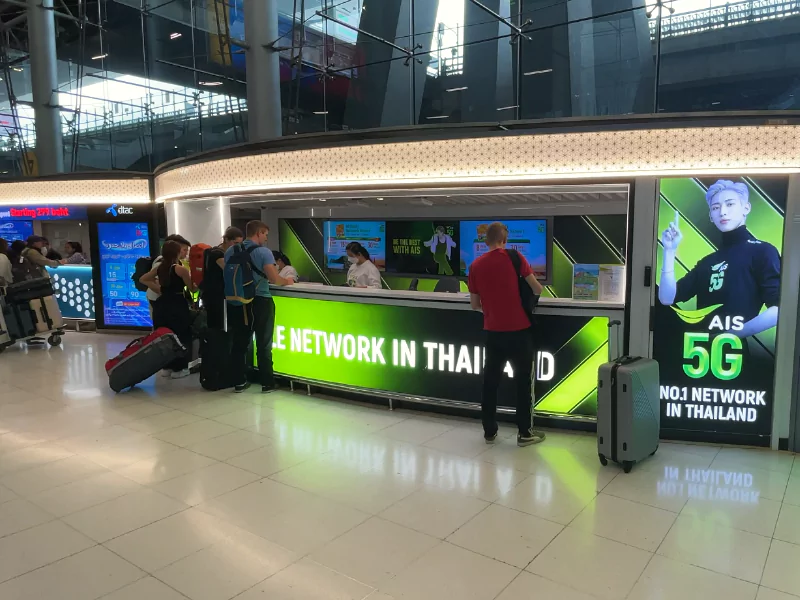
Local SIM cards or eSIMs: Which should I use?
Now we have come to the question, which one should I use? Well it depends on a few factors like: How long are you going to stay, how much do you want to spend and how fast do you need to be connected after landing? We have compiled 5 possible scenarios for you:
- Our favourite method for short stay or multiple countries: When we are somewhere for a short time, we want an eSIM to be connected directly after landing. We prefer to use either Airalo or Klook for all our eSIM needs!
- Our favourite method for longer stay: If we choose to stay somewhere longer (at least 1 month), we prefer choosing SIM card from a local provider. Often times they also offer the local SIMs as eSIM, which makes it much easier to keep your home number and now your new number stored on the same phone. For longer stays having a phone number is very practical and in some countries it’s even necessary to have one if you want to arrange anything.
- Cheapest option: This is always buying a local SIM in the country itself! If we get a local SIM we buy it from one of the biggest providers as they usually have the biggest network. Usually in every city there are physical stores but it never hurts to do a google search and see what is what in the country you’re visiting.
- Most convenient option: This is pre-loading an E-sim from Airalo or Klook and you will be instantly connected when arriving at your destination.
- Backup option: If at any moment you come into the scenario you need to be asap connected after landing but can’t do a pre-loaded e-sim. It’s fine to buy one at the airport, you just pay a little extra and that’s it.
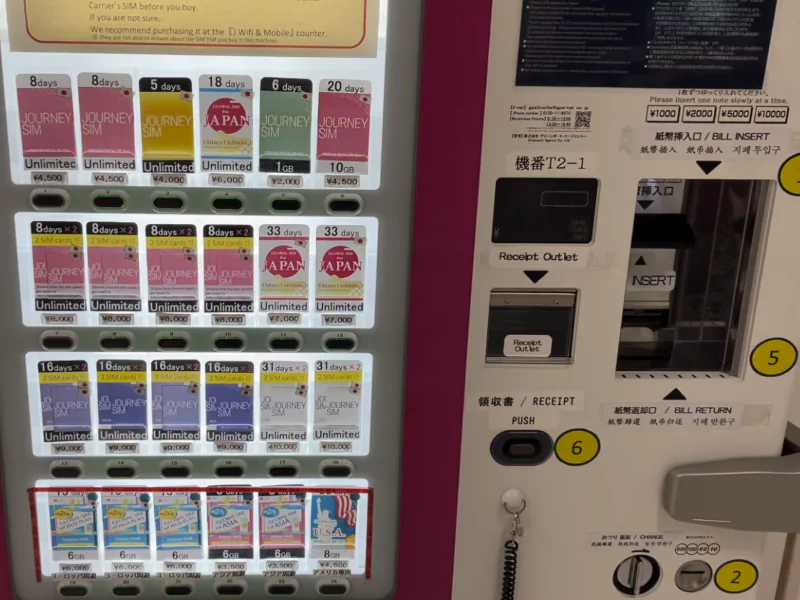
Conclusion
So there you have it, you now know the difference between a buying a pre-booked eSIM and buying a local SIM card. It just all depends on what you want. We usually change our methods depending on the country we visit. Every country is always a little different so make sure you research specifically for your country if you decide to do a local SIM card.
Safe travels, thank you for reading and see you on the next blog!
– Laurens & Laura

Laurens is the co-founder of Yes and Explore, with a background in sports, theater, and bringing people together. He’s happiest when traveling, tasting his way through local dishes, and sharing stories that inspire your next travel adventure.




